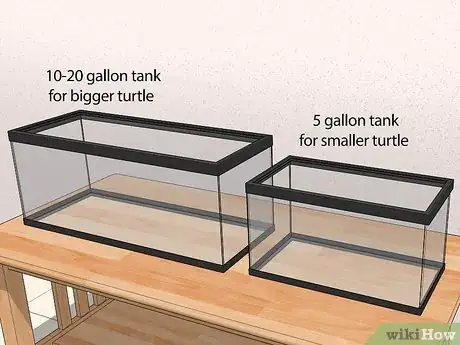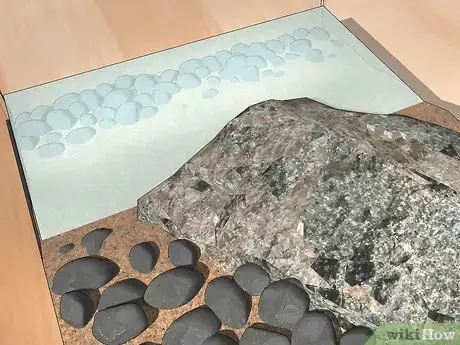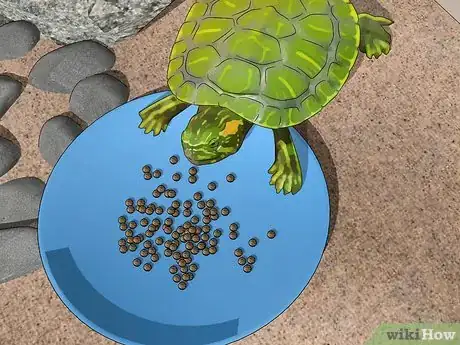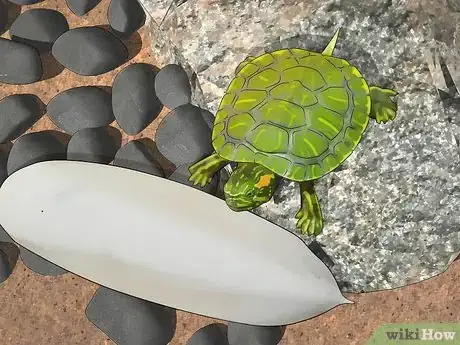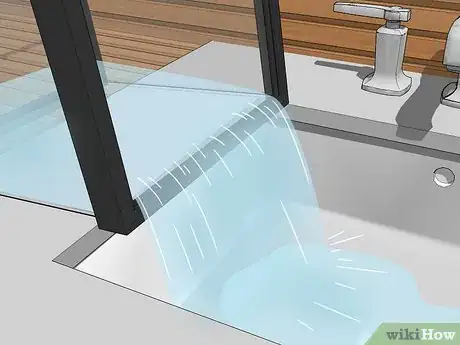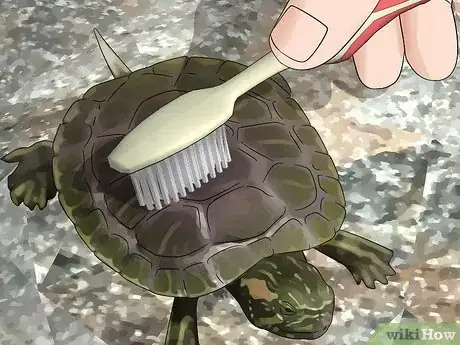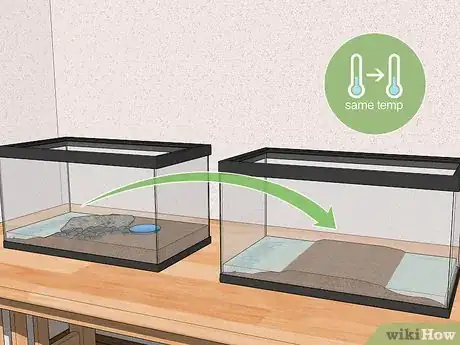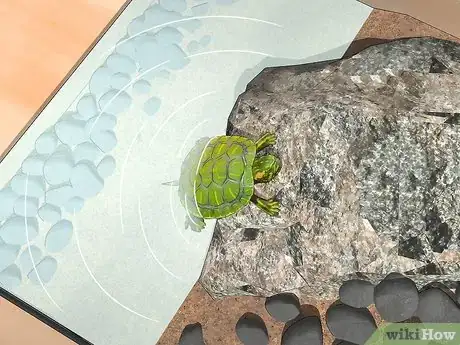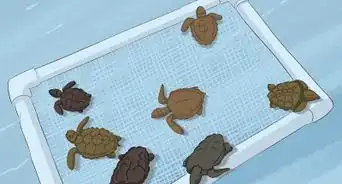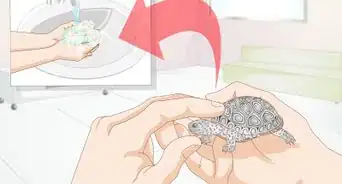This article was co-authored by Audra Barrios. Audra Barrios is a Marine Biologist and owner of Lick Your Eyeballs, a business offering experiemces, reptiles, supplies and plants. With over 15 years of experience, Audra specializes in reptiles and exotic animals, environmental education, marine biology, conservation issues, and animal husbandry. Audra earned a BASc in Marine Biology from the University of California, Santa Cruz, and studied Natural Sciences at the College of Marin. She is the founder and Executive Director of Things That Creep, a non-profit dedicated to herptile conservation through education. She has spent the last nine years working as a biologist at the California Academy of Sciences.
There are 10 references cited in this article, which can be found at the bottom of the page.
wikiHow marks an article as reader-approved once it receives enough positive feedback. In this case, several readers have written to tell us that this article was helpful to them, earning it our reader-approved status.
This article has been viewed 153,249 times.
Certain species of turtle and tortoise can live for long periods of time, even outliving humans.[1] If you want to learn to look after this fun and friendly pet, you can learn to prepare the proper habitat to make your turtle comfortable. You can also learn the proper techniques for feeding, cleaning, and caring for your turtle in the long term.
Steps
Preparing a Turtle Habitat
-
1Make sure you've really got a turtle. Turtles have webbed feet and are primarily water-dwelling reptiles, while tortoises have more rounded "elephant-like" feet and spend most of their time on the land. They need similar habitats, but there are some key differences that you'll need to know so you make sure you treat your animal right.[2]
- Popular turtles to keep as pets include Sideneck turtles, wood turtles, painted turtles, pond turtles, and slider turtles.
- Popular tortoises include red foots, Greek tortoises, and Russian tortoises.
-
2Keep the turtle in an aquarium. Turtles are aquatic animals, so they need to live in an aquarium. If the turtle is fairly small, a 5 gallon tank will do. If it's a slightly bigger breed, then it will need a 10 or 20 gallon tank at least. All aquariums should have mesh lids to allow proper air circulation and keep the turtle inside.[3]
- You need more than a bowl and a rock to ensure proper health and longevity of a turtle. Those little "Turtle Ponds" you can still find in pet stores are insufficient, and sometimes called "Death Bowls" by experienced turtle keepers.
- Turtles do grow, so make sure you talk to a turtle or pet retailer about your specific turtle breed, and find out more about the species and how much bigger its likely to get. Get a tank big enough for its ultimate size, not the size it is now.
Advertisement -
3Use a UV heat lamp and thermometer to control the temperature. Turtles need about 12-14 hours of sunlight a day for the proper amount of Vitamin D. Purchase a high-quality UV lamp for your tank. Set it up with an automatic timer to make sure the turtle gets the light it needs.[4]
- For most turtles, you'll need to keep the aquarium around 78 F (25 C), but some turtles might be able to abide slightly lower or higher temperatures.
- Heat lamps can generally just be clipped to the edge of the tank and angled down. Install an easily visible thermometer stuck to the side of the tank to make sure the temperature stays consistent.
- You'll need to create a temperature gradient in your turtle's tank so there's a hot side and a cold side. That way your turtle can regulate its temperature.[5]
-
4Provide a mixture of dry and wet surfaces. There are a variety of ways to decorate and fill your habitat, depending on the specific species. Aquatic turtles need a mostly wet environment, while tortoises and other land-dwellers will need a lot dry area. Both turtles need variety, however.[6]
- Create a rock incline for aquatic turtles, to give them some dry area on which to sun and warm. Get a large container and a rock about 4 inches (10.2 cm) long. Clean the rock with untreated water.
- Wooden boards or bricks make great land areas as they can be cleaned easily. Just make sure they stay dry and are sloped gently towards the water for easy access. Wood chips and bark can get moldy or grow fungus. Turtles will also eat them sometimes, causing problems. It's best to avoid these materials.
- Some clay or plastic shelter is a good idea. Find an appropriately-sized one at your local pet store or make one with some stones.
- If you put plants inside the tank, do a quick check to make sure they are compatible and that your turtle will not get sick if he decides to eat a few of the leaves. Real plants are nice but get eaten within days. Unless you have a pond where you grow plants, think about using artificial plants for decoration.
-
5Provide plenty of untreated natural spring water. Distilled water contains no minerals, and isn't sufficient for keeping turtles healthy. Tap water contains chlorine and possibly fluoride which can upset the pH balance of the turtle's habitat. De-chlorinated spring water needs to be used for the swimming area and filtered water for your turtle to drink.[7]
- Adding a teaspoon of salt per gallon of water will reduce the level of bad bacteria and protect the turtles better from shell and skin diseases.
- Spritz the dry areas regularly with a spray bottle, to maintain the moisture in the area. Again, this will vary, depending on the particular species.
-
6Get a water filter. Aquatic turtles will need a lot of water in the aquarium, and it would make your job a lot easier to get a water filter and pump assembly, to cycle the water out regularly and clean it. Because turtles eat, drink, and defecate in the tank, it's very important to keep the water as clean as possible for the health of your turtle.[8]
- Water filters are generally quite quiet and affordable, and they feature a small sump that sucks the water up and filters it through a filter and back into the tank.
- You'll still need to change out the water and clean the tank about every month, but you'll need to change out the water much more regularly (every 2-3 days) without one.
Feeding Turtles
-
1Feed turtles 2-3 times a week. Dietary requirements vary widely and will differ depending on the type of animal you have, so it's important to do your research and talk to a turtle retailer in your area. Most turtles need to be fed no more than once every three days or so.
- Turtles are primarily carnivores, while tortoises are primarily herbivores. Turtles enjoy eating mealworms, super worms, snails, grubs, and a variety of other insects. Tortoises enjoy fruits and vegetables, including dark leafy greens like kale and turnip, as well as corn and watermelon.
- Feeding turtles too frequently or feeding the wrong kinds of food can have serious health consequences. Turtles usually live a long time, so it's important to provide for your pet and make sure that you're providing the right amount of nutrition on a regular enough basis.
-
2Feed turtles and tortoises dry supplements. Different species have specific feeding needs, so the exact dietary requirement of your turtle will need to be researched. Care Sheets, commonly provided at pet stores, will help you learn more.
- Commercial turtle food is usually fine. Available in pellet form, it's a mixture of dried shrimp, cricket, and a variety of vitamins and minerals necessary to keep the turtle happy. Any turtle food you can buy at the pet store will do. Amounts will vary depending on the size of the turtle.
- It's not recommended to feed your turtle table scraps. However, green, leafy vegetables are sometimes recommended for tortoises and turtles, and can provide a healthy snack, and if you're not opposed, turtles are generally huge fans of the occasional worm or grub, tossed into the tank.
- Generally, tortoises need a salad the size of their body every single day.[9]
-
3Prepare a feeding area for the turtle. In most tanks, it's a good idea to use a small plastic dish from which to feed the turtles. These are commonly sold at pet stores, but you can also use any small plastic or glass dish that you've got.
- Many turtles will defecate shortly after eating. If you leave them in their feeding tub for a while after feeding, they will defecate in the dish. You get less waste in the tank this way. Not overfeeding will also keep the waste down.
-
4Provide a cuttle bone. Like birds, some turtles appreciate having a cuttlebone to gnaw on, helping to provide the turtle with calcium and dental (beak) health. These are commonly sold at most pet stores for birds, crabs, and turtles.[10]
Caring for Turtles
-
1Change the water and remove old food bits every 2-3 days. Remove any tattered food bits and clean the waste from the tank using a small net or cloth. It's important to keep the turtle's eating and living area clean of waste to make the turtle happy.[11]
- Change out the drinking water regularly and supply new water when you do this. If you use a water filter, you only need to change out the water every couple of weeks.
-
2Clean the turtle's tank every two to three weeks. Remove the turtle from the tank and place it into a temperature controlled area for a while you wash out the tank thoroughly with spring water. You don't usually need to use soap to wash down the turtle's tank. Just use a thorough scrub brush to scrape off any algae or other growth from the sides of the tank.[12]
- Replace the water, the light, other supplies, and the thermometer, and return the turtle to the freshly cleaned habitat.
-
3Groom the turtle a few times a year. When you do full tank cleanings, it's a good idea to wash down your turtle and inspect for any signs of injury or disease. There is shell conditioner that you can buy at the pet store, which can be applied with a toothbrush to the back of the shell.
- Gently brush off any algae and other growth using the toothbrush. Many turtles like the sensation of being brushed, so this should be a good experience for your pet.
-
4Only take the turtle out of the habitat in similar temperatures. Turtles are cold-blooded, which means they take a long time to adjust to temperature changes. If you take your pet out of the tank to play, be sure the room is at relatively the same temperature as the tank. Sudden changes will cause stress and possibly harm the turtle's immune system.
-
5Always wash your hands before and after handling your turtle. Turtles often carry Salmonella, so it's very important to wash your hands after handling them. Keeping the water in the tanks fresh and removing waste promptly should also help keep bacteria under control in the habitat. Installation of a water filtration system should also help.[13]
- Keep your fingers away from the turtle's mouth any time you handle your pet. A bite can hurt even if accidental.
-
6Leave the turtle alone most of the time. Turtles are not like dogs and cats. They do not enjoy going for walks and being handled. Some keepers allow their turtles to walk around on their floors, or take them outside for walks, or carry them around. This is not something your turtle will enjoy, nor is it good for them. This causes unnecessary stress and could will eventually lead to health problems.[14]
- How do you keep turtles happy? Leave them in their habitat and watch them swim, eat, bask and move about in their home which you have provided. They will be much happier and so will you.
- Most people find that tortoises enjoy going outdoors and roaming around under supervision, while turtles prefer remaining in their habitats and not being handled. Still, it's good to limit your direct handling of the tortoise as much, in general.
Expert Q&A
Did you know you can get expert answers for this article?
Unlock expert answers by supporting wikiHow
-
QuestionDo tortoises need a swimming area?
 Audra BarriosAudra Barrios is a Marine Biologist and owner of Lick Your Eyeballs, a business offering experiemces, reptiles, supplies and plants. With over 15 years of experience, Audra specializes in reptiles and exotic animals, environmental education, marine biology, conservation issues, and animal husbandry. Audra earned a BASc in Marine Biology from the University of California, Santa Cruz, and studied Natural Sciences at the College of Marin. She is the founder and Executive Director of Things That Creep, a non-profit dedicated to herptile conservation through education. She has spent the last nine years working as a biologist at the California Academy of Sciences.
Audra BarriosAudra Barrios is a Marine Biologist and owner of Lick Your Eyeballs, a business offering experiemces, reptiles, supplies and plants. With over 15 years of experience, Audra specializes in reptiles and exotic animals, environmental education, marine biology, conservation issues, and animal husbandry. Audra earned a BASc in Marine Biology from the University of California, Santa Cruz, and studied Natural Sciences at the College of Marin. She is the founder and Executive Director of Things That Creep, a non-profit dedicated to herptile conservation through education. She has spent the last nine years working as a biologist at the California Academy of Sciences.
Marine Biologist & Reptile Specialist
-
QuestionHow can you tell how old a turtle is?
 Audra BarriosAudra Barrios is a Marine Biologist and owner of Lick Your Eyeballs, a business offering experiemces, reptiles, supplies and plants. With over 15 years of experience, Audra specializes in reptiles and exotic animals, environmental education, marine biology, conservation issues, and animal husbandry. Audra earned a BASc in Marine Biology from the University of California, Santa Cruz, and studied Natural Sciences at the College of Marin. She is the founder and Executive Director of Things That Creep, a non-profit dedicated to herptile conservation through education. She has spent the last nine years working as a biologist at the California Academy of Sciences.
Audra BarriosAudra Barrios is a Marine Biologist and owner of Lick Your Eyeballs, a business offering experiemces, reptiles, supplies and plants. With over 15 years of experience, Audra specializes in reptiles and exotic animals, environmental education, marine biology, conservation issues, and animal husbandry. Audra earned a BASc in Marine Biology from the University of California, Santa Cruz, and studied Natural Sciences at the College of Marin. She is the founder and Executive Director of Things That Creep, a non-profit dedicated to herptile conservation through education. She has spent the last nine years working as a biologist at the California Academy of Sciences.
Marine Biologist & Reptile Specialist Unfortunately, if your turtle is full-grown, you can't really tell unless you know when they hatched from their egg. If they're a baby or 1-5 years old, you can make an educated guess based on the size of them, but really, their growth depends on the temperature that they're being kept at and the food that they're being offered. A turtle that has optimal conditions might be full-grown in five years, whereas an animal that maybe didn't get enough heat or food might still be very, very small five years in.
Unfortunately, if your turtle is full-grown, you can't really tell unless you know when they hatched from their egg. If they're a baby or 1-5 years old, you can make an educated guess based on the size of them, but really, their growth depends on the temperature that they're being kept at and the food that they're being offered. A turtle that has optimal conditions might be full-grown in five years, whereas an animal that maybe didn't get enough heat or food might still be very, very small five years in. -
QuestionHow do I know if it's a boy or a girl?
 Lia BeanCommunity AnswerTo determine the gender of a turtle, you must look at the tail and the nails. Females have short stubby tails and shorter nails; male turtles have long nails and long, thinner tails.
Lia BeanCommunity AnswerTo determine the gender of a turtle, you must look at the tail and the nails. Females have short stubby tails and shorter nails; male turtles have long nails and long, thinner tails.
References
- ↑ Audra Barrios. Marine Biologist & Reptile Specialist. Expert Interview. 18 August 2020.
- ↑ http://pets.petsmart.com/guides/turtles/choosing-the-right-turtle.shtml
- ↑ https://www.vetbabble.com/reptiles/turtles/
- ↑ https://www.petsmart.com/learning-center/reptile-care/your-turtle-or-tortoises-new-home/A0094.html
- ↑ Audra Barrios. Marine Biologist & Reptile Specialist. Expert Interview. 18 August 2020.
- ↑ http://pets.petsmart.com/guides/turtles/
- ↑ http://www.reptilesmagazine.com/Reptile-Health/Ask-A-Vet/Herps-And-Distilled-Water/
- ↑ Audra Barrios. Marine Biologist & Reptile Specialist. Expert Interview. 18 August 2020.
- ↑ Audra Barrios. Marine Biologist & Reptile Specialist. Expert Interview. 18 August 2020.
- ↑ https://www.animalwised.com/nutritional-properties-of-cuttlebone-for-pets-618.html
- ↑ https://www.petsmart.com/learning-center/reptile-care/cleaning-your-tortoise-or-turtles-habitat/A0077.html
- ↑ https://www.petsmart.com/learning-center/reptile-care/cleaning-your-tortoise-or-turtles-habitat/A0077.html
- ↑ https://www.matts-turtles.org/handling-turtles.html
- ↑ http://www.reptilesmagazine.com/Reptile-Health/Habitats-Care/The-Five-Most-Important-Things-To-Do-When-Keeping-Aquatic-Turtles/
About This Article
To look after a turtle, put it in an aquarium with enough filtered water that your turtle can swim. Then, add in some gravel or rocks to part of the tank so that it can get out of water when it wants. You should also install a UV heat lamp and thermometer to keep the temperature at about 78 degrees Fahrenheit. Feed your turtle meal worms and dry turtle food 2-3 times per week and avoid handling it too much, because turtles prefer being left alone. One a month, clean the cage and give your turtle fresh water. To learn how to tell the difference between a turtle and a tortoise, keep reading.


